Jewelry Business Consultant and Luxury Retail Consulting Services
Why Start a Jewelry Business or Expand Jewellery Business?
Jewelry has been a companion of mankind for thousands of years. It may be unclear what prompted our ancestors to invent jewellery but the fascination continues to date. Cutting across cultures and traditions wearing jewellery is customary almost everywhere. The bulk of jewellery sales come as a product of adornment. For some, jewellery is a reflection of one’s wealth, honour, importance, and status in society. In many cultures and belief systems, people wear precious metals and stones in the form of jewellery for their healing powers. Jewellery is also used as an indirect form of investment as precious metals like gold are highly valued and their prices only appreciate with time. Jewellery products also pass on from generation to generation with modifications to represent the ongoing ornamental and fashion trends. That way it is also a representation of ancestral connections. It is difficult to put any one reason over the other to ascribe our fascination for jewellery until you ask a buyer personally. If you are in the jewellery business, you must comprehend the nature of motivation and morale behind the buying behaviour. These reasons can be very subtle and vary from place to place. For example, the biggest consumer markets for gold are China, India, the United States, the UAE, and Iran. But the buying rationale and associated values in each of these countries are drastically different from one another.
What is Jewelry Niche?
Jewelry items are mostly used in the form of nosering, earrings, necklaces, finger rings, bracelets, bangles, anklets, etc. The key metals used in jewellery are gold, platinum, palladium, silver-sterling, titanium, tungsten, and stainless steel. And precious stones that often accompany jewellery are diamond, emerald, rubies, sapphire, aquamarine, opal, tanzanite, rose quartz, etc. Jewelry has various forms and demand also varies for each jewelry type. Jewelry brands have developed their USP and niche depending on these various forms/ types of jewelry. Few popular types of jewellery are:
- Antique Jewellery
- Temple Jewellery
- Bead Jewellery
- Bridal Jewellery
- Fashion Jewelry (Imitation Jewelry)
- Fine Jewelry (Gold/ Silver)
- Permanent Jewelry
And others…..
Prospects of a Jewellery Business
Given the high popularity and demand for all forms and sizes of jewellery products in any prospective market region, it makes lucrative to start jewelry business or starting a Jewellery line. From all income groups, less or more in quantity, for frequent use or meant for special occasions, almost every person buys jewellery once in a while, for themselves or for gifting others. Here, we are not discussing the morale and reasons behind buying but the fact that buying takes place for certain. Just like any other product, jewellery also comes in many forms and price brackets. For special occasions like marriages or baby shower ceremonies, exquisite metals like gold, diamond, or silver are preferred. For routine or casual purposes, fashion jewellery comes into action. Thus, the market demand for jewellery products remains consistent. While the purchase of fine jewellery is often a planned activity for most customers, the products at the lower end of the price bracket involves impulse buying. Thus, starting imitation jewellery, diamond jewelry brand or silver/ gold jewelry business are various verticals wherein cost to start a jewelry business varies for each model. As per your brand positioning and niche you wish to develop its very important to first finalise your brand ethos. Refer to following video to get more insights on how to create a jewelry brand? Click Here.
Challenges of Jewellery Industry: from a business perspective
1. Keeping up with the vogue
Jewellery products are mostly bought to be used for ornamental purposes. This makes it subject to trends like fashion wear. Although the constituting elements like the stones and metals must meet the prescribed quality standards, the external component i.e. the design of jewellery plays the next important role. The challenge with jewellery brands is to keep up with the trends. Predicting these trends is not an easy task. It is common for jewellery stores to see customers walking out because they did not exactly what they were looking for. Secondly, it takes time and skill and alterations in the casting process to conceptualize or incorporate a new design and bring it to the store. Some jewellery brands offer customization but that too is possible only when customers are willing to wait for a few days or weeks depending on the intricacy of the design sought.
2. Customer acquisition
The problem of customer acquisition is more acute with fine jewellery or any other occasion-based jewellery. These purchases are mostly governed by personal occasions. Precious metals like gold or diamond in their purest and authentic forms are not meant for casual gifting or routine use. Such occasions are rare for an individual. Thus, in a given market, with a limited customer base, the purchases tend to be a one-time activity for a long period. This problem is further compounded by competition which affects the other forms of jewellery businesses as well. Another obstacle in customer acquisition is product collection. It is difficult for jewellery stores to accurately anticipate every customer’s design expectations. They can keep stock of certain standard prototypes which are always in demand. But customers always seek something different from the ordinary. If a store does not have what a customer is seeking, its competitor store in the next block might be.
3. Scaling / Expand Jewellery Business
Businessmen and entrepreneurs should always be looking into the future with their feet firmly held in the present. Growth and expansion are critical for the survival of a business enterprise in the long run. The same holds for jewellery businesses. Scaling comes with its unique set of challenges for jewellery stores. Firstly, additional investments have to be made in inventory. Because jewellery comprises high-value metals and stones, this amount tends to stand high. Additional investments are also called in the form of hiring or purchasing real estate to start a successful jewelry store. Secondly, starting a new jewelry store means additional operations. Suddenly, the burden of business management doubles for jewellery business owners. Controlling the business operations of multiple jewellery stores is always challenging. Thirdly, customer service and brand reputation get exposed to mismanagement. As operational control becomes a challenge, service-related aspects also take their share of the beating.
4. Franchising Jewelry Stores
Franchising is a smart and efficient way to approach growth and expansion in business. It has let many international brands enter foreign markets. But there are ample cases of jewelry franchise failures as well at both domestic and international levels. What franchisees can take for granted is the reputation of the franchisors’ brand. Not all franchise jewelry stores could see through the years of hard work that franchisors put into building a brand reputation. The fallout of such underestimations is often exposed in the way business operations are carried out by the franchisees including in their seriousness for customer service and support activities. But franchisors cannot brush aside these and other reasons for jewelry franchise failure. The onus of ensuring that their business is carried out by the franchisees as it should be lies on them first. All the critical aspects of a franchise business must be planned and defined in advance. Many franchise jewelry stores do not see the results coming from jewelry franchising. And eventually, the ties are snapped. All these failed efforts and investments could be avoided with vision and franchise planning.
5. Constraints in Jewelry eCommerce
Despite the general success of eCommerce, jewellery has certain barriers in the online channel. Expensive jewellery products are rarely bought online. The reason is the lack of physical validation. A majority of customers are not comfortable making any significant jewellery purchases via online stores. Irrespective of one’s acute awareness about precious metals, stones, or gems, if it is fine jewellery, customers prefer purchasing by visiting a jewellery store. The problems are not so severe in the case of fashion or other relatively economical forms of jewellery. But it is likely that over time, there will be a greater acceptance of the eCommerce channel for purchasing fine jewellery when the businesses begin to address the concerns of customers.
6. Customer Experience
Jewellery businesses need to adopt ecommerce and technology in relevant ways to enhance customer experience. Jewellery is a personal requirement. Individual preferences, experiences and emotions play a vital role in consumer behaviour. These aspects are very subjective rendering them difficult to be read or predicted with high accuracy. Digital marketing and data analytics are of significant aid in improving customer experience. Traditional jewellery brands cannot afford to turn a blind eye to technologies that help them better comprehend and map customer experience. Experience stores or remote AR-VR experience could be of great marketing value in customer acquisition and enhancing customer experience.
How YRC Jewellery business Consultants can help: a glimpse
1. Market Research of Jewelry Industry
YRC’s market research report covers analyses of a wide range of variables covering market overview, channels, competition, demand, pricing, trends, SWOT analysis of jewelry business and more. An experienced team of jewelry business consultants carry out a detailed and comprehensive assessment of all the key market variables. The goal is to make a holistic assessment of the market and derive specific and actionable insights for improved planning and decision-making for better business. We traverse in search of wisdom from ‘how things are’ to ‘what can be done’.
2. Jewellery Business Model Development
YRC’s jewelry business consultants help clients start a jewelry business or expand jewelry business by developing a strong brand positioning with operations automation. Our focus is on identifying the right UVP for clients and crafting the strategic framework of the value chain and internal capabilities. This framework defines how the intended value shall be created and delivered to the customers. In business development services, our team of jewellery business consultants shall cover value proposition, budgeting and analysis of cost to start a jewelry business, omnichannel strategies, business-IT requirements, sales & operations strategies.
3. Jewellery Business Strategy Consulting
Like other businesses, in the jewellery business also, there is a need to formulate business or functional strategies. This ensures that each function and the overall business system run in an organized and synchronized manner. These functional areas include both core and support functions like sales and showroom operations, finance, HR, IT, marketing, logistics, etc. All these sub-systems must work towards achieving their functional objectives and contribute their share to the accomplishment of the macro business objectives. Our team of jewellery business consultants shall identify, define, and map the role of each function and their operational inter-relationships in making the business model work to success.
4. Jewelry Business Plan Development
The necessary financial projections and planning are critical for assessing the mettle and sustainability of starting jewelry line business. In jewelry business plan development, we assist clients to review the commercial viability of their business project. Our team of jewellery consulting experts follows an arduous, comprehensive, and systematic process in the preparation of the jewelry business plans. Key areas covered in Jewellery business plan are capital and initial investments, operational costs, cost to start a jewelry business, cost to make a jewelry website, analysis of profit margin in jewelry business, revenue turnover, purchase and inventory planning, profit and loss projections, ROI and break-even analysis, jewelry store profit margin analysis, etc. These financial assessments also serve as a roadmap to start jewelry business and risk analysis while decision making in financial matters.
5. SOP Consulting/ Jewelry Business Management Automation
In SOP consulting, our objective is to help clients become process-oriented enterprises as against people-dependent business systems. We help clients build a robust operational foundation. We formulate the Standard Operating Procedures (SOPs) for the processes and operations involved in the jewellery business. Our SOP training consultants for jewellery business impart regular training sessions to sales and operations team. Our SOPs help clients automate operational routines, maintain consistency of standards in performance and output, build better growth systems, and eliminate loss of productivity. These services are imparted by an experienced team of retail jewelry business consultants.
6. CX Strategy for Jewellery Business
Customer experience is a critical area of work in the jewellery business. It significantly affects how swiftly customers traverse their shopping journey. Good experiences make this journey smoother and quicker bringing the customers closer to making a purchase or giving effect to any conversion goal. The objectives and activities for CX cannot be decided on the go but have to be contemplated in advance. Every physical and digital touchpoint must address the element of CX. Our jewellery consulting experts assist clients in mapping the CX journey and in planning and implementation of CX strategies for their business.
7. Franchise Consulting for Jewellery Business/ Franchising Jewelry business
As franchising proves to be an effective business expansion strategy, it is common to find jewellery brands adopting the franchise route. Keeping in mind the most updated practices and challenges specific to jewelry business franchising, in franchise consulting, we help clients plan and implement their franchise projects. We assist in formulating expansion strategies, preparing the jewelry franchise business plan, mapping the franchise partner search activities, drafting the franchise legal agreements, developing the franchise business process manuals and defining the audit processes.
We are a boutique retail consulting firm with experience and expertise in a wide range of verticals including jewellery consulting and luxury retail consultants. To know more about our jewellery business consulting services or luxury retail consulting, drop us a message and our team shall coordinate a call back with your company. Planning to build a Jewellery Store brand? Or Looking for Jewellery Business Consulting? Or Looking for jewellry retail automation? Get in touch with us today !!!
Let’s Talk!
Case Study
FAQs
How to start a jewelry business? Or Looking to start jewelry business?
07 key steps to consider while starting a new jewelry business
#1 – Jewelry Business Model
#2 – Product Category Finalization
#3 – Jewelry Store Layout Planning (online & briack-and-mortar)
#4 – Organization Structure
#5 – Standard Operating Procedures (SOPs)
#6 – Jewelry ERP Software Evaluation & Selection
#7 – Jewelry Sales & Operations Training
Refer to foll. videos for detailed insights of the above steps:
How to start a jewelry store?
05 key steps to start jewelry store
1st step: Jewelry Business Plan
2nd Step: Store Location Validation
3rd Step: Sales & Operations Plan
4th Step: Jewelry Store Layout Planning
5th Step: Standard Operating Procedures/ Jewelry Management System.
Refer to foll. video for detailed insights of the above steps:
How much does it cost to start a jewelry business?
The cost to start a jewelry business depends on following factors:
- Business Model Type (Online, Offline or hybrid model)
- Brand Positioning (Premium brand, luxury brand, highstreet brand, etc)
- Product type & product mix (fashion jewelry, fine jewelry, silver/ gold/ diamond jewelry, etc)
- In case of Jewelry store: size and location of the store
- Business Niche, if any
If you have the answers to the above factors, then you can work with YRC Jewelry business plan consultants to derive the budgets and investment to start a jewelry business. The business plan can be helpful to raise funds too from investors or banks.
Looking for Jewellery Business Consulting. How can YRC help?
YRC are Retail Management consultants since 2012. YRC Jewellery Business Consultants has the expertise in following services:
- Market Research of Jewelry Business
- Jewelry Business Model Development
- Jewelry Business Strategy Consulting
- Jewelry Business Plan Consulting
- Jewelry Business Automation/ Jewelry Business Management
- Jewellery ERP & Jewelry Inventory Management System Consulting
- Jewelry Franchise Consulting
- Jewelry Training Programs on SOPs/ management
To know more, get in touch with YRC Retail Experts today !!!
How do I create a jewellery brand?
Pre-requisites for building a jewlery brand:
- Define brand UVP and Niche
- Define your brand positioning
- Define SOPs/ Systems and processes. (Note: Brand cannot be have poor systems)
- Define your Sales & Operations Plan
- Define your Marketing Plan
Following activities shall help to define the above 05 pre-requisites:
- Through Competitor Analysis (refer to this video to get brief understanding) Click here.
- Customer Analysis
- Business Plan (budgeting your investments)
To know more, get in touch with YRC Retail Experts today !!!
How to expand jewelry business? How to grow jewelry business? or How to enhance/ improve my jewelry retail business ? or How do I make my jewelry brand stand out?
Jewelry business is a high competiton industry, thus developing competitive edge becomes very important for any brand to maintain or expand their market share/ sales. Jewellery brands who have not pivoted their business model have seen stagnant growth specially post-covid pandemic.
Few key elements to consider for jewelry business growth:
- Brand Niche: Its important to tell your customers that why they need to buy from you and not your competitors
- Brand Experience: Repeat buying is the key to build a profitable business. Poor service, systems and processes will lead to loss of trust in the brand.
- Brand Franchising: Jewelry franchsing has proven to be successful amongst various brands
4. Omnichannel Retailing: Today its not about being just present online and offline, but giving an omnichannel experience. To know more about this subject. Click here.
What are the threats for a jewelry business?
Key threats to Jewelry business:
- Loss of Customer Trust: Due to poor systems/ processes and high making charges during buying/ selling
- Poor Inventory Management: Application of RFID systems and jewelry inventory management systems with well-defined SOPs is a must for any brand
- Unplanned Expansion: Expanding without systems to support the expansion can lead to unforseen losses and devaluation of the brand
- Poor Cash Management: At stores having systems for cash collection, deposit and reconciliation is important to avoid unforseen losses
- Poor Security Management: Jewelry stores need adequate security and survelliance systems to avoid theft and claim insurance in case of theft
To know how to overcome these threats, get in touch with YRC experts today !!
How do I manage my jewelry business?
Ways to efficiently manage your jewelry business:
- Define your SOPs (Standard Operating Procedures)
- Conduct regular process audits
- Conduct regular sales audits/ mystery shopping
- Define your HR Policies
- Implement Business ERP and required softwares for automation
- Implement Loss Prevention Systems and processes
- Define your expense budgets
- Hire middle-level management staff to manage business operations
To get help is above areas, get in touch with YRC retail business consultants today !!
Related Blogs
Challenges for Luxury Retail Brands and Stores
The term ‘luxury’ could have different connotations from different perspectives. For some people, it is optional and they may not strongly feel the need to indulge. For some others, it could be a representation of status symbol, personal identity, and...
Starting an Online Luxury Retail Business: An Organized Approach by YRC
Luxury retail is an exclusive vertical. Premium customer support, impeccable product quality, robust distribution and delivery, and an irrefutable brand positioning leave no room for ordinary ways of doing business in luxury retail. From planning to operations,...
How to start an Online Jewellery Business?
Online Niches, Stats, & Steps every entrepreneur must know !!! Wearing jewellery is no longer restricted to women alone, times have changed and there is increasing demand amongst men to buy jewellery both online and offline. Currently, jewellery and accessories...



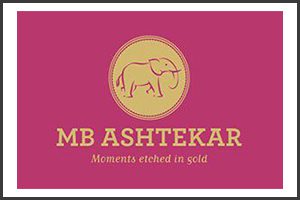
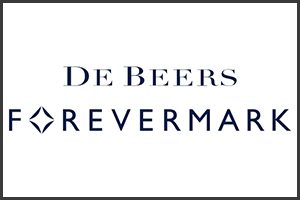
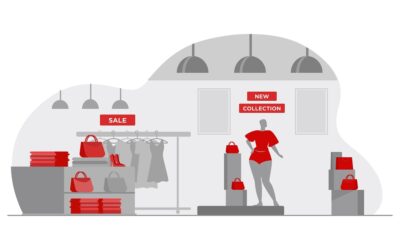
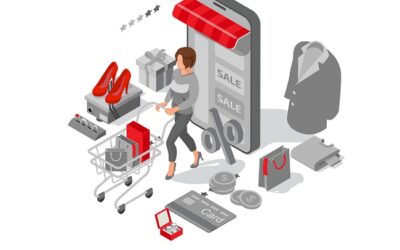
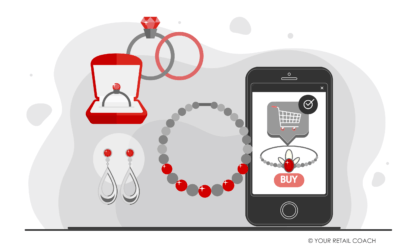
We work only for Visionaries.